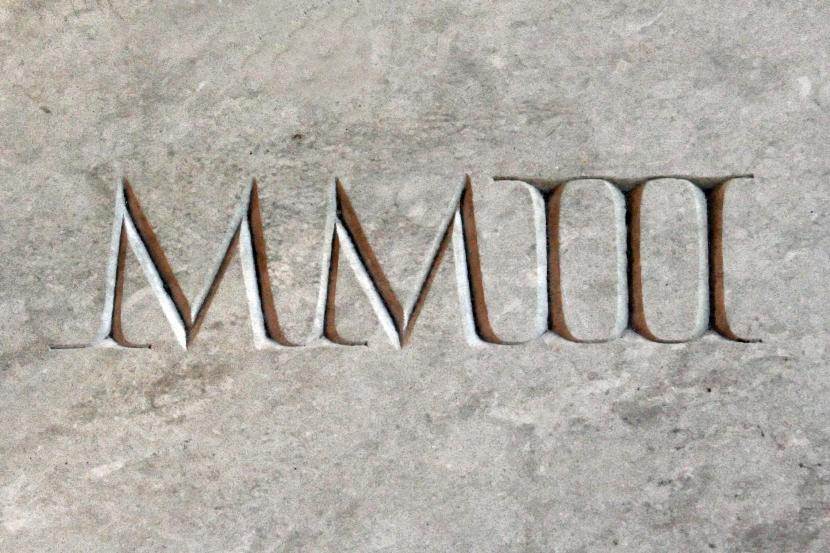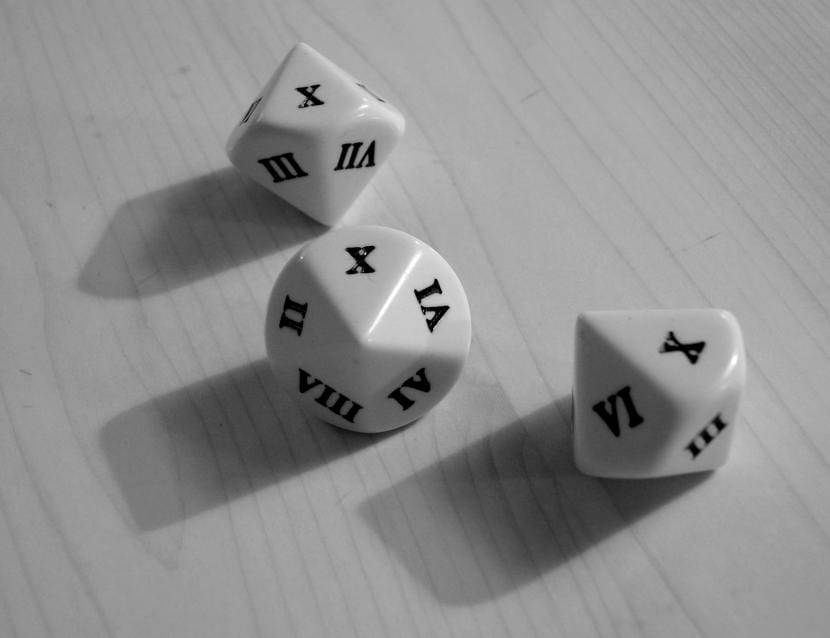
The Roman civilization was one of the most prosperous. They invented the newspapers, the roads, the aqueducts, the Roman arches and, also, one of the writings that is still used today in some areas: the Roman numerals. But, Do you know the rules of roman numerals?
Surely you still remember some of the classes that they gave you in school or in institute: of that system of Roman symbols based on letters and not numbers, as is our decimal numbering. Would you like us to refresh the rules of Roman numerals?
Origins of Roman symbols

Roman symbols
Roman numerals are based on letters and symbols of the Roman alphabet, although it must be said that originally came from the Etruscans, which used I, Λ, X, Ψ, 8, and ⊕ to represent I (1), V (5), X (10), L (50), C (100), and M (1000). And where does the Etruscan enumeration come from? It seems to be that of stripes, sticks and bones that the Dalmatian and Italian shepherds used, towards VII a. C.
The Roman numeral system is very characteristic, because unlike others, higher value symbols are written before lower value symbols. For this reason, it was able to evolve until it achieved that the sign of lesser value in front of a greater one was subtracted instead of adding. For example, the number 1999 went from M · DCCCC · LXXXX · VIIII to M · CM · XC · IX, which is also very easy to read.
Even so, until the Middle Ages both systems were still combined.
Roman numeral rules

Anciently, Roman numerals were sometimes written in lowercase letters, although in modern times they are written in uppercase. One of the things to know is that there is no letter to represent 0, since it really is not a value as it does not mean anything. But also, there are other rules of Roman numerals that you should know, and they are the following:
- Roman numerals are always read from left to right, which is not a problem for us, since our writing and reading systems are read in the same order.
- Roman numerals I, X, C, and M can be repeated up to three times when writing a composite Roman numeral.
- Roman numerals V, L, and D can never be repeated.
- If a composite Roman numeral has a number on the right less than the one on the left then both are added. Example: XI: the number on the right (I = 1) is less than the one on the left (X = 10) then they are added, that is, XI = 11
- If a composite Roman numeral has a number on the right greater than the one on the left and this is an I, X, or C, then the one on the left is subtracted from the right. Example: IX: the number on the right (X = 10) is greater than the one on the left (I = 1), and this is also I, then the one on the left is subtracted from the one on the right, that is, IX = 9
And what are the roman numeral rules to represent the thousands or millions?
One- or two-letter Roman numerals are easy, right? But the Romans also knew how to count to thousands, and they even had a symbol to represent the millions. So what were the rules of Roman numerals that had to be followed to list them?
Actually it is also simple: in fact, it was enough to put a line to the letter, as you can see in this table from Wikipedia:
| Roman numeral | Decimal | Nomination |
| V | 5000 | Five thousand |
| X | 10.000 | Ten thousand |
| L | 50.000 | Fifty thousand |
| C | 100.000 | Hundred thousand |
| D | 500.000 | Five hundred thousand |
| M | 1.000.000 | One million |

As you see, If a Roman numeral has a dash on it, then its value is multiplied by a thousand. And to show a value of ten million, what was done was to put a line above and another below the letter X.
But the Romans not only had a decimal system for whole numbers, they also had a duodecimal system for fractions. The duodecimal system is based on twelfths, that is, 12 = 3 x 2 x 2, with which they could make common fractions, which could be presented on a daily basis, as ¼.
Many of the coins that were used in his day show dots, indicating a ounce (ounce), that is, one twelfth. Each one of them represented fractions of up to five twelfths. To represent half, however, they used the letter S, from seedling, which means precisely half; and if they needed to represent the unit, they put an I.
Roman numeration
The rules of Roman numerals can be a bit complicated at first, but then you realize that it is a matter of patience and, above all, practice. Some of the Roman symbols that taught us during our student days and that still appear in textbooks today are:
- I = 1
- V = 5
- LX = 60
- CDL = 450
- MMXVI = 2016
And that's it, I hope these rules of Roman numerals clarify the issue a bit :). If you have any doubts regarding the roman symbols or with Roman numerals, leave us a comment to help you.
Characteristics and curiosities of the Roman numeral system
It is obvious that the Roman numeral system It was used by the people who lived in the ancient times of the Roman empire. As a main characteristic we find that in this numerical system some letters are used as symbols for numbers.
It is also important to mention that Roman numerals are a decimal numbering system. What do we mean? In other words, they have tens, hundreds, thousands, and so on.
A curious fact that we should not fail to mention is that there is no number zero to designate the non-existence of elements (this number was known since Babylonian times, but it was only introduced as a number in India in the 900s and became known worldwide thanks to the Arabs, although it is known that the Dionysius monks Exiguus and Saint Bede in the year 525 and 725 used the symbol N to represent 0, but this is not used today).
Inside Roman numerals there are no negative numbers either. It is important to know that they are currently used for number the different volumes or books of an encyclopedia (Volume I, Volume II), we also use them for names of the Kings, Popes and other ecclesiastical figures (Pope Benedict XVI), for the acts and scenes from a play it is also used (Act I, Scene 2).
The Roman numeral system is used today for the congress appointment, Olympics and other events (II Congress of Medicine), we also make use of it for the numbering of different films of the same saga (Rocky, Rocky II, Rocky III and others), and others.